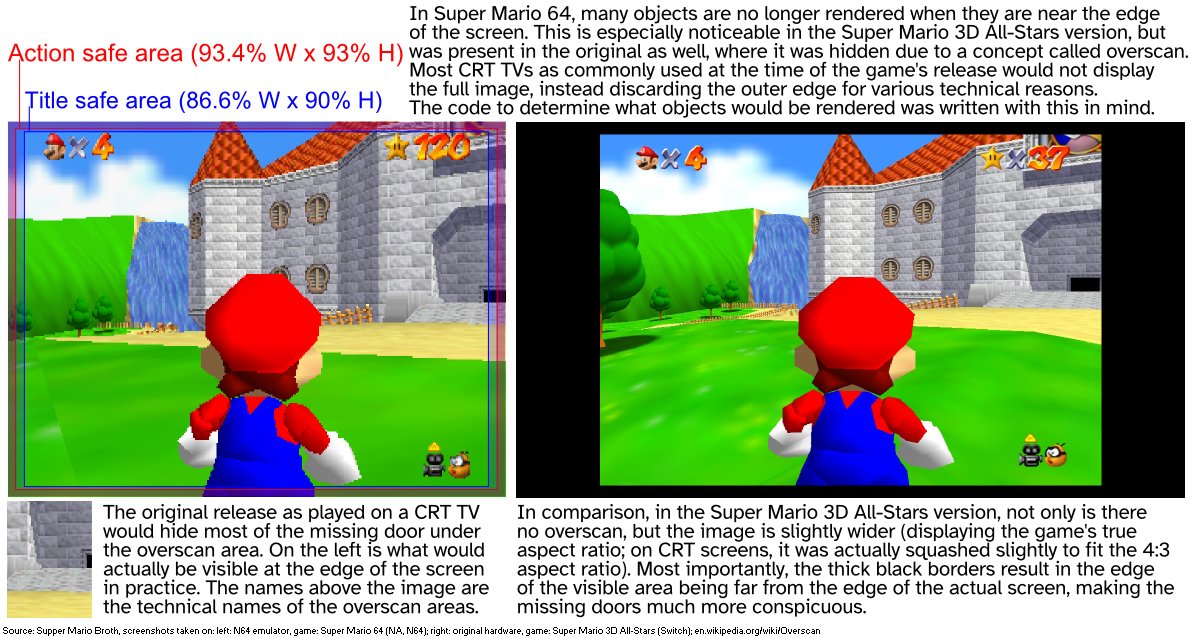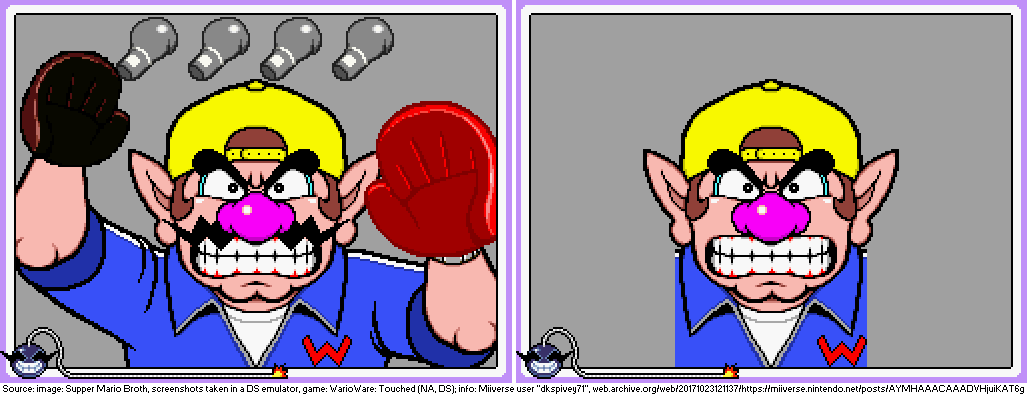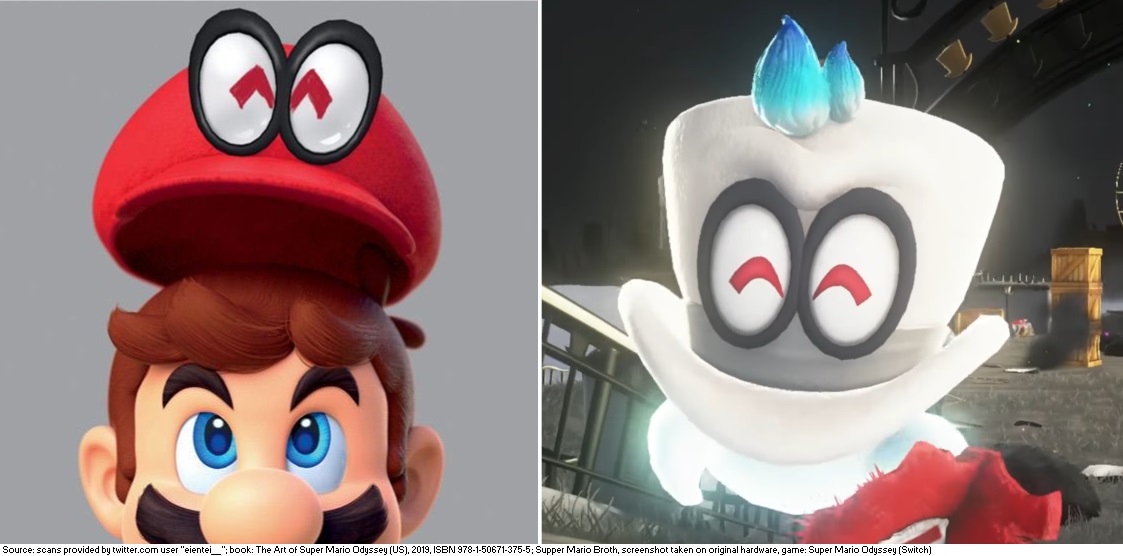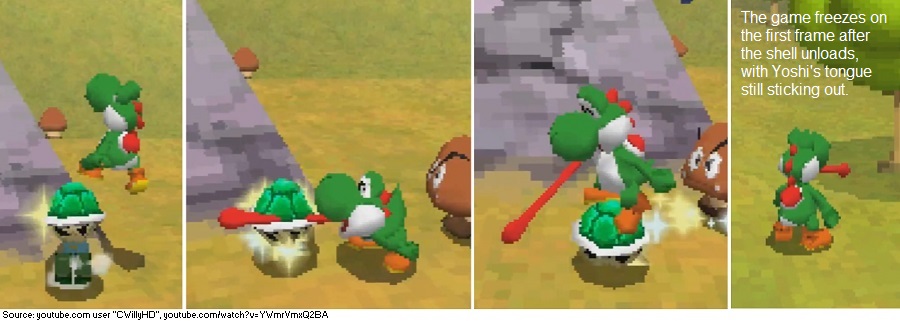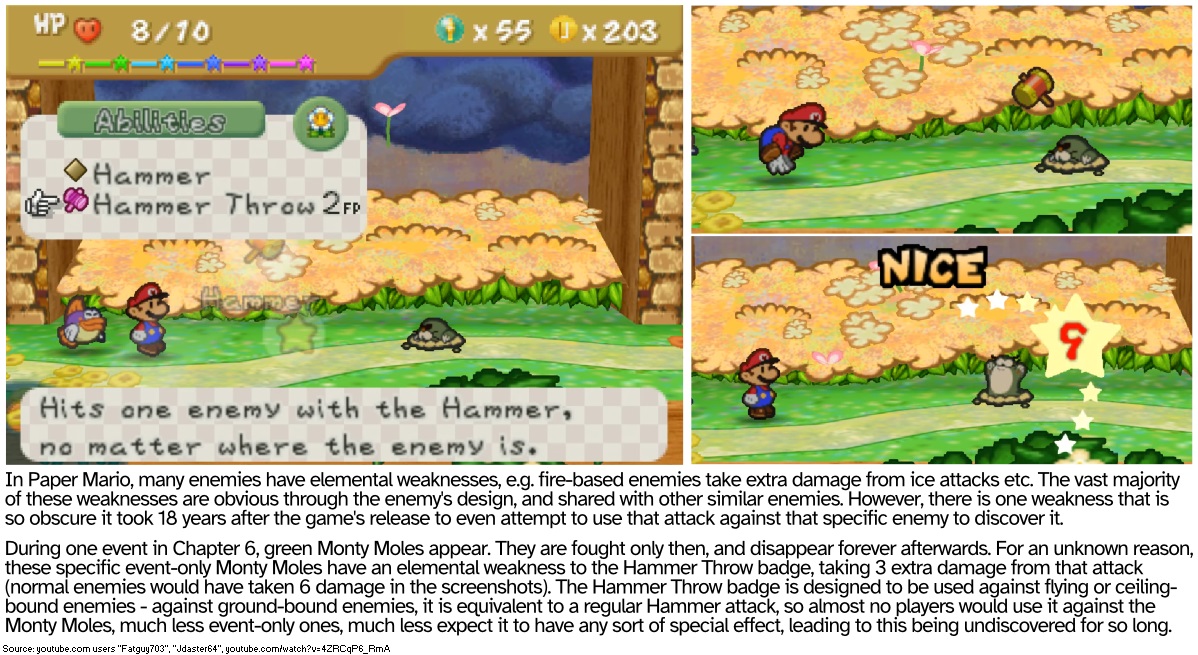1601
1602
1603
In Super Mario Bros. 3, Statue Mario dies when touching a level boundary, which is possible by sliding into it from a slope. This happens in every version of the game except Super Mario Advance 4.
1604
A brief announcement: since I have received many inquiries regarding the Supper Mario Broth carrot Mii, here is a close-up look of it and instructions on how to recreate it, courtesy of renowned Mii expert @HEYimHeroic. Regular content will now resume.
1605
In Super Mario Sunshine, flames shrink as Mario douses them, but continue hurting him until they are completely gone. Near the end of the dousing process, the flame is microscopic, becoming invisible to the game's camera, but still hurts Mario if he touches it.
1606
1607
1608
In Super Mario World, some levels contain bonus rooms where three blocks must be hit in a randomly determined order to get 1-Ups. With a Galoomba, the game can be cheated: any order will always register as correct if the blocks are hit by a Galoomba with a Cape Spin.
1609
1611
1612
1613
1614
1615
In Super Mario 64, if Mario reads a sign on a slope from the side, he will slide in front of it while retaining his elevation. This can cause him to float in mid-air. The second part of the footage repeats the animation, slowed down; note Mario's shadow showing he is floating.
1616
1617
1618
1619
1620
The giant 6 made out of blocks in Bowser's Castle in Super Mario World can kill Mario in two ways. Jumping on top of it can cause him to be pinched between two blocks, dying instantly, or he can become trapped inside the 6 with no escape, needing the timer to run out to continue.
1621
1622
In Rainbow Ride in Super Mario 64, there is a platform with Bob-ombs. To avoid the Bob-ombs pushing Mario off the platform, it may appear reasonable to run into a corner when chased by one; however, this is actually even worse since the explosion can push Mario through the wall.
1623
1624
1625
